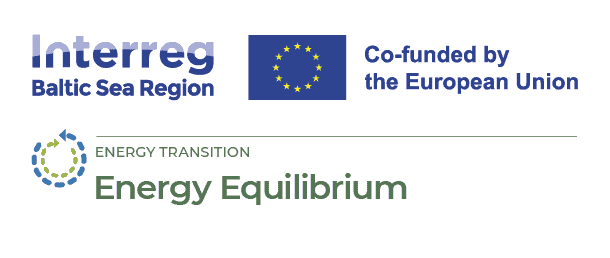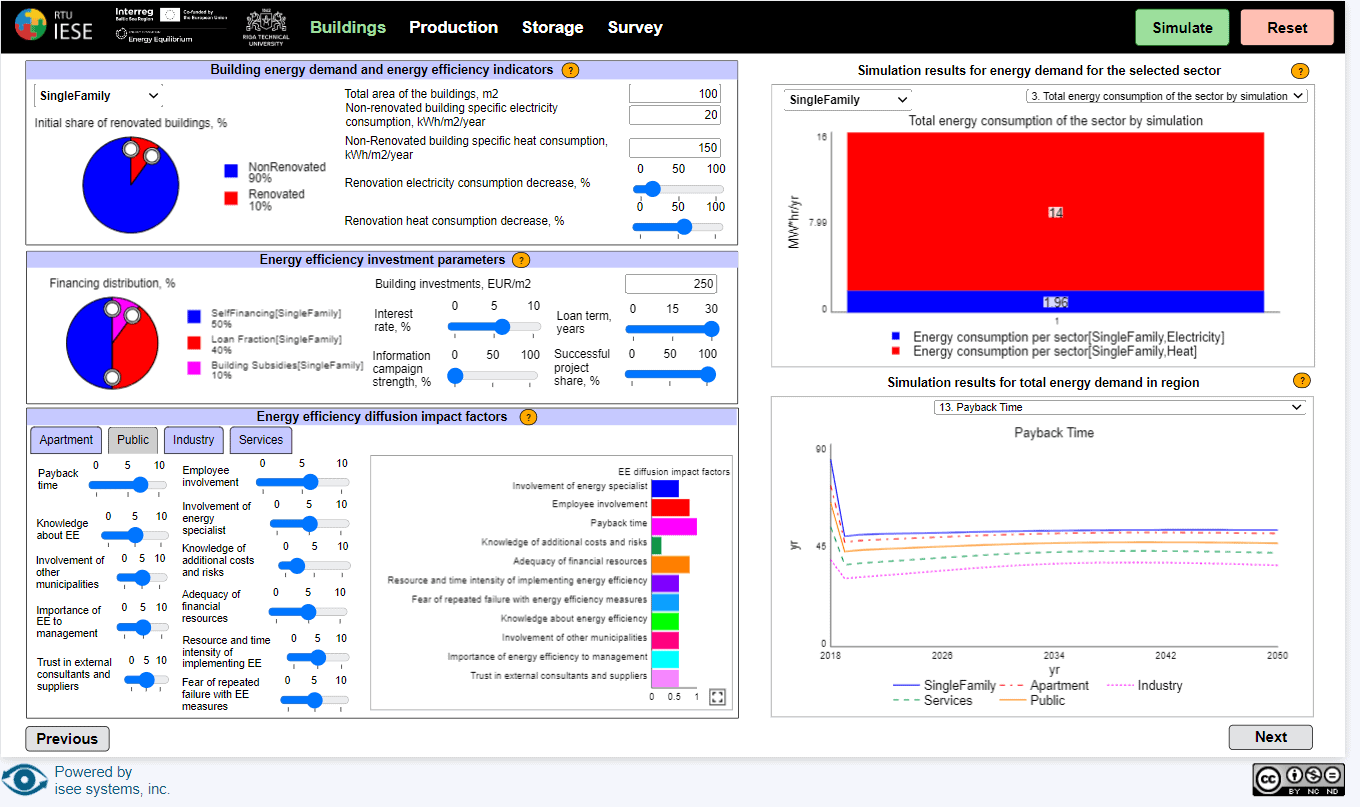
The prototype of the Energy Equilibrium platform is already available for everyone to test
17 February 2024
We are thrilled to present the initial version of the Energy Equilibrium Platform prototype! This prototype marks a significant milestone in our journey towards identifying renewable energy growth potential in local energy systems.
The Energy Equilibrium project aims to develop an interactive energy simulation and modelling tool that can support municipalities and energy providers in decision-making related to the development of efficient action plans to accelerate the local RES use in the region.
After the first year of project implementation, we have developed initial version of the Energy Equilibrium Platform prototype that everyone can test and give their feedback on the platform’s functions and features!
Energy Equilibrium Platform prototype allows you to:
- Replicate your energy system and discover the main consumption groups in your region;
- Discover the level of your energy system flexibility and potential for higher renewable energy deployments;
- Identify your existing energy storage potential in your region;
- Model different energy system infrastructure development scenarios;
- Compare different strategies based on the calculated investment costs, energy tariffs, and many other factors.
Explore the initial version of the Energy Equilibrium platform yourself through this link: https://exchange.iseesystems.com/public/testlearntestsagain/municipality-model/index.html#page1

Platform prototype interface functionalities
A preliminary model interface has been developed for the prototype. This version of the model interface covers three main segments – building energy demand, energy generation and energy storage. It is a generalised model without taking any specific municipality data input.
Energy demand page
On the Building energy demand page, the user can set different parameters that drive energy demand in the different sectors. In the drop-down list user can select the respective sector (households, industry, public, services, transport, others) for which to perform modelling.
Three main segments in this page are building energy demand and energy efficiency indicators, energy efficiency investment parameters, energy efficiency diffusion impact factors.
Energy production page
On the Energy production page, the user can set various parameters that characterise the general energy system.
The first segment in the interface on both pages – energy production and energy storage – is the energy demand and economic parameters segment that stays unchanged in both pages.
Energy storage page
On the Energy storage page, the user can set various parameters that adds energy storage technologies into the overall general energy system. In this page the principles and functionalities are the same as in the page for energy production.
Simulations
Once user has set the values for the measures, he/she wishes to implement, user can press the green button “Simulate” on the top right corner of the page to run the simulation. The results of each simulation will appear on the graphs next to the previous simulation results and user will be able to compare the achieved results. The red button “Reset” on the top of the page allows user to revert to the original version of the model. On the home page of the platform there is a tutorial video on how to use the platform successfully. The simulation period of the model extends to the year 2040.
This article was prepared and published by Laura Kristiāna Vičmane
© Photo by Myriam Jessier on Unsplash





